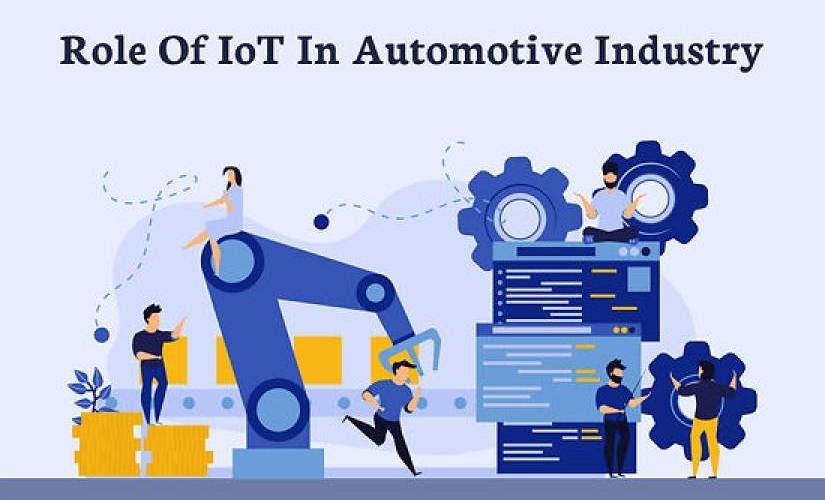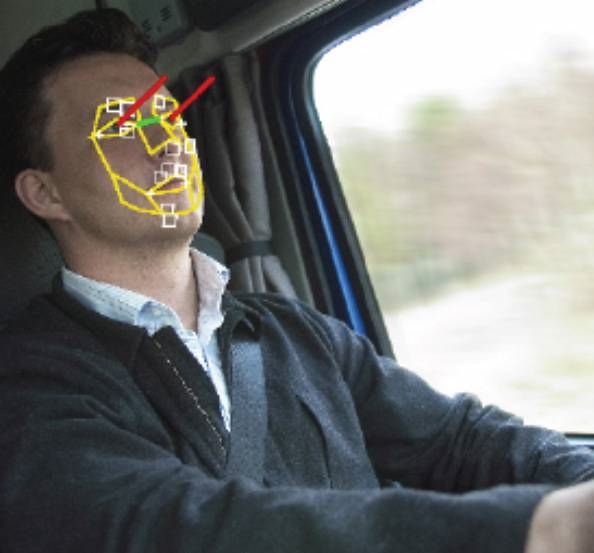The Role of IoT in Automotive Industry

The Internet of Things (IoT) is one of the breakthroughs of the world. The applications of IoT can also be observed in the automotive industry. Like any other industry, this industry is also getting accustomed to the applications of IoT. Here we explain a few roles of IoT in the global automotive industry.
The overall investment in the automotive industry is only increasing. As per the latest predictions, this investment amount is expected to exceed $ 9960 million by 2025. In fact, by 2025, IoT will become an integral part of the designs of different car models.
If you’re still in doubt regarding the role of IoT in the automotive industry, it’s time you start learning.
1. Predictive maintenance

Car maintenance takes place in either preventive or predictive approaches. The predictive maintenance approach is more convenient. If you are previously aware of when your car may run out of fuel, then it’s easier to take action, and we cannot ignore the role of IoT here.
Achieving a predictive approach has become easier with the initiation of IoT. For example, by integrating IoT within a vehicle’s operating system, you can monitor different aspects of your car in real-time.
All the collected datasets can be utilized to predict how soon a car requires maintenance service.
Clearly, the integration of IoT helps your vehicle to stay in a much better situation.
2. Autonomous vehicle
Have you imagined how cool it would be if a vehicle could run on its own without any driver? Well, it would be great. Such a car is commonly known as an autonomous car.
A fully autonomous car has not been developed yet, but several manufacturers are in the process of launching one. Such a vehicle will be nothing less of a revolution. You must understand that the role of IoT is huge in manufacturing an autonomous vehicle.
In fact, semi-autonomous vehicles have already been in the market, and they help the drivers with activities like driving, parking, changing a lane, and so on. A semi-autonomous vehicle is much better at making spot-on decisions for your vehicle.
It is a proven fact that semi-autonomous vehicles can reduce the frequency of accidents to a large extent. That is because there’s hardly any room for human errors in such a vehicle. So you can clearly understand that the situation will get better with a fully autonomous vehicle.
3. Easy communication

This may sound new, but IoT can create easy communication between vehicles. This feature of IoT comes under the smart infrastructure category and is one of the most demanded technologies of the present era.
You may be confused regarding the aim of a vehicle to vehicle communication. So, let me help you out right here.
If two vehicles are connected, and information regarding route taken, speed, etc., are figured out, it is easier to stop any possibilities of accidents.
Under such a vehicle-to-vehicle communication, if two cars are accident-prone, both drivers will receive notifications about the possibilities, thanks to the role of IoT.
In fact, in a situation of urgency, the IoT system of your vehicle can take automated actions to stop an accident.
This communication, also known as V2V technology, can create the transport system of an entire city much smarter than it already is.
Also, autonomous vehicles are on their way to enter the market. So, if car owners are already accustomed to the V2V technology, it would be easier for them to adapt to autonomous vehicles.
4. Connectivity between car and smartphones
With IoT, you can integrate your car and smartphone. It is one of the best applications of IoT in the automotive industry. By connecting your car with your personal device, you can acquire three different types of facilities.
Firstly, predictive maintenance of your vehicle can improve a lot more with car and smartphone integration.
If you can get direct feedback regarding your vehicle through your smartphone, it would be easier for you to contact different technical service providers and get your car repaired. In some cases, you may even figure out about your car’s condition before it gets too serious. Such is the role of IoT here.
With IoT, real-time monitoring is also pretty easy. Moreover, with the help of IoT, exchanging necessary datasets between the car manufacturer brand and the buyer of a car has also become easier.
So, in many cases, the car manufacturer brand can also suggest the car owner regarding the vehicle’s maintenance from time to time.
The car owner or driver requires some perceptive information regarding the management of the car. With the smartphone and vehicle connection, you can manage your car through your smartphone, without any issues.
In that case, both vehicles and smartphones will be under the same network, and you can easily transfer datasets from one medium to another.
This is another major advantage of IoT integration in the automotive industry.
5. Monitoring driver’s activities

A driver is running the car, and it is necessary to keep the driver’s activities regularly. With IoT, it is possible to monitor the activities of a driver regularly. Furthermore, with IoT, collecting information related to driving style is easier.
Hence, the IoT system itself can predict how the driver is expected to approach an emergency, and accordingly, this system suggests driving protection tips for the driver as well. Let’s consider the example of car manufacturing brand Faurecia.
Faurecia had installed an active seat known as the wellness seat, where a driver’s heart rate will be under monitoring. That way, one can understand if the driver is under stress or lack of mental control. This way, one can stay alert from any future dangers.
6. Better security and surveillance

In an IoT-connected car, different external sensors are used. These sensors are installed in the form of rear-view cameras along with your vehicle. This means the drivers are highly protected.
These external sensors can easily keep track of the traffic. To add to this, it is also possible to assure that there aren’t any driving risks involved in this context. Collisions are also detectable in advance.
7. In-vehicle telematics
Both Google and Apple, the two biggest tech giants of the world, are currently in the way of bringing in-vehicle telematics.
They’re collaborating with various car manufacturers for the same. In addition, Google has already launched apps like Google Maps, Google Assistant, etc., for a better automotive experience.
However, these apps have some limitations. At present, these apps only function if the user offers instructions and connects their smartphones with internet connectivity. While this is beneficial, it can become better with IoT connectivity.
In the future, it is expected that these apps can run autonomously without the users operating them.
Final Words
IoT is a disruptive technology that has already changed the way many sectors used to operate.
Now it’s time to transform the automotive sector. In this article, we have talked about the role of IoT in the automotive industry.
In our opinion, IoT integration is nothing less than a breakthrough for this industry. That day is not very far when IoT will rule the transport system of an entire nation. So, what are your thoughts?
If you have any inputs or questions you want to share, don’t forget to comment below. We’ll be in touch shortly.
Image Credits: inner article photos and top graphic provided by the author. thank you!
The post The Role of IoT in Automotive Industry appeared first on ReadWrite.
(61)